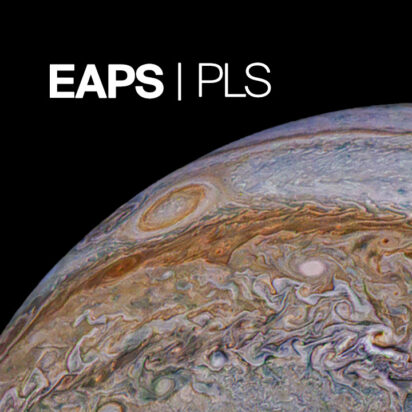
[PLS] Emma Lovett (Boston University)
Date: Tuesday, April 29, 2025 Time: 12:30 - 1:30pm“Ground-based Observations of Europa’s Alkali Exosphere during the Juno Flyby”
Jupiter’s icy moon Europa is enveloped in gaseous sodium and potassium that resonantly scatters sunlight as optical emission lines. The High Resolution Echelle Spectrograph on the Keck 1 telescope has spatially mapped these alkalis contemporaneously with Juno’s PJ45 flyby. Beyond 3 Europa radii, where emission becomes separable from bright surface reflectance, their extended radial profiles indicate atmospheric escape. This suggests alkalis are ejected from the ice by a high energy process— likely ion sputtering— into an exosphere where initial energies are not appreciably dampened through collisions with the cold O2 atmosphere and icy surface. The neutral sodium cloud appears oval-shaped with remarkable symmetry east-west and north-south, a sign that incident plasma has access to the majority of Europa’s surface, and effects of centrifugal latitude may be negligible at the time of observations. The Na column density is a few ×1010 atoms cm-2, and the Na/K ratio 27 ± 8 at 10 Europa radii, consistent with prior estimates. However, this ratio decreases with distance despite sodium’s lower mass and lifetime against ionization. Doppler broadening in the resolved Na line profiles grows with tangent altitude from a few thousand Kelvin to >15,000 K by 25 Europa radii. Considering the more than two-fold increase in Io’s Na loss at this time, brightness levels in good agreement with past data reinforce an interpretation that Europa is a net source of alkali atoms that ultimately derive from its subsurface brines or saline ocean.
Planetary Lunch Seminar —
Colloquia topics span the range of research interests of the department’s planetary sciences research program, and the talks are intended to appeal to any graduate students, postdocs, research scientists, and faculty with a background in planetary science. Speakers include members of the MIT community and visitors.
Contact: planetary-org@mit.edu
